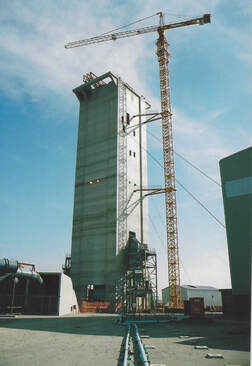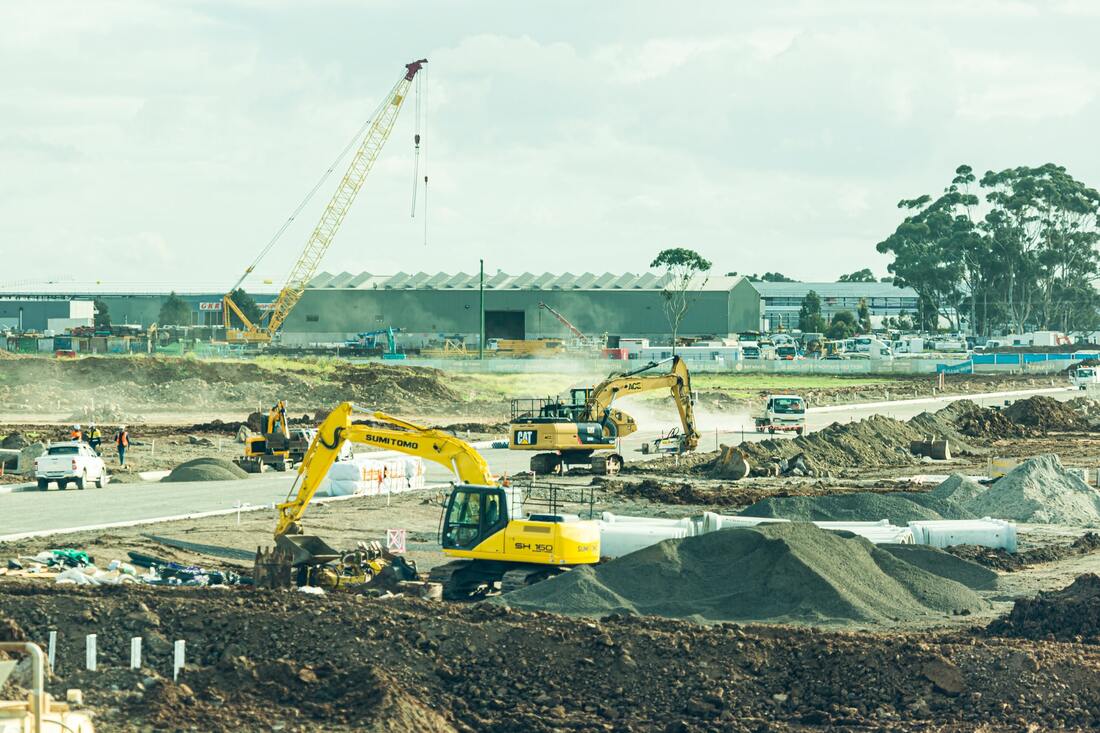|
The construction industry is one of the largest in the county, and due to the nature of the work, can also be one of the most dangerous. In 2018, more than 20% of on-the-job fatalities occurred in the construction industry. You read that right - one out of every five deaths in the workplace happened on a construction site. Many of the most common jobsite hazards are easy to avoid with a little bit of training and preparation. What are the most common safety concerns on today’s construction site and how can you avoid them? Navigating the Fatal Four Hazards on Your Construction ProjectWhen talking about construction site hazards, one of the most common things you’ll learn is how to navigate what OSHA calls the Fatal Four -- the four events most likely to cause on the job fatalities. The four most common construction safety hazards are:
Each has its own causes and challenges that supervisors and site managers need to address to keep their team safe on the job. Preventing Falls Any time a worker is above ground level, there is the risk for a fall. The easiest way to prevent these injuries and potential fatalities is to ensure that everyone is using the correct fall arrest equipment whenever they’re off the ground. Install perimeter protection around the edges of current projects, and make sure to mark any openings clearly. Preventing Struck-By Struck-by events can range from annoying to devastating, depending on the size and mass of the object involved. Ensure that everyone is aware of moving objects on the job site at all times, and do not allow anyone to walk or work between moving and fixed objects. High visibility clothing should also be a requirement on these sites. Preventing Caught In/Between Caught in/between events most often happen in trenches or other excavation projects. Ensure that no one is allowed into unprotected excavation sites, especially before protection systems are installed. Even if it looks solid, there’s no guarantee that it is. Preventing Electrocution Everyone on the job site needs to be aware of potential electrical hazards, from overhead or buried power lines to portable equipment with frayed or damaged power cords. Inspect all work spaces carefully before beginning to ensure that all potential electrical hazards are addressed. Train employees on proper lockout/tagout procedures for any equipment that you may need to take offline for repairs. Dealing with Weather Hazards Weather conditions in different parts of the world each present their own unique hazards that you’ll need to be prepared for. Both extreme heat and extreme cold can put employees at risk and you’ll have to address each one differently. For extreme cold temperatures, ensure that everyone is wearing enough layers of clothing to stay warm. Focus on parts of the body that may be at more risk for injury in the cold, such as the fingers and ears. Provide heated spaces for your team to take breaks during the day. Providing warm drinks might be a good idea too. For hot weather, shade and frequent breaks are going to be your best friend. Try to avoid working during the peak daylight hours between 10am and 3pm so your team and their equipment isn’t spending the entire day in direct sunlight. Work early in the morning and late in the afternoon. Preventing Repetitive Motion Injuries Repetitive motion injuries occur, as their name suggests, when an employee does the same motion over and over for long periods. Overexertion, which can be very common in the construction industry, only makes them worse. Encourage proper lifting techniques through both training and practice. In some situations, you may even want to consider implementing some low-grade automation for mundane tasks to prevent these injuries from occurring. Ensure your construction team returns home safeEach year many workers are killed or injured on construction projects. Construction is one of the most hazardous occupations. But it does not have to be like this. You can ensure that your construction project is safe, and that you and your team work safely without injury, by taking a few extra precautions and ensuring your team understand the hazards of construction. Author Bio: Rose Morrison is a freelance writer who covers construction and building design topics. She is also the managing editor for Renovated. Do you want to learn how to manage construction projects successfully?Paul Netscher has written several easy to read books for owners, contractors, construction managers, construction supervisors and foremen. They cover all aspects of construction management and are filled with tips and insights.
Visit to read more. The books are available in paper and ebook from most online stores including Amazon.
2 Comments
Retired Construction Professional with Management Experience of Over 120 Construction Projects This week in his "THIS IS MY STORY" Steve Keightley-Smith features Paul Netscher - a Construction Professional with over 30 years experience to read more click here Is your crew 100% productive? Is all the equipment on your project 100% productive? Now many project managers and supervisors will answer that of course their crew and equipment are productive. But how productive? Consider this, if your crew works 10 hours a day and they’re paid 10 hours, but in this time they have a 30 minute lunch break and two 15 minute tea breaks, then straight off they are only working 9 hours. Now the breaks are pre-set and may have nothing to do with the project manager or supervisor. But let’s consider more. Are workers at their work stations at the start of the shift? Almost definitely not! There’s tools and materials to collect, prestart meetings, time for a chat, then a walk to the job site. At least 15 minutes is lost – and that’s on a good project, because it’s often more like 20 to 30 minutes. What about each side of the rest breaks? Inevitably workers start drifting to the toilets and eating areas 5 minutes before the start of the rest break. Then, afterwards they straggle back to the work site, taking 5 to 10 minutes to start work again. At least 30 minutes has been lost over the 3 rest and meal breaks!. Then the end of the shift. On many projects workers are all washed up and queued at the project gates at the end of the shift. To do this they’ve left their work station 15 minutes earlier so they could walk to the store, return tools and clean up. A 10 hour shift has been reduced to 8 hours and they haven’t even started to work! How productive is your construction crew? Image by mrandolph from Pixabay Image by mrandolph from Pixabay But what happens while they’re working? Inevitably there’re interruptions. A chat with other workers, toilet visits, waiting for cranes, stepping aside so that others can do work, equipment breakdowns, walking back to the store to get other materials, waiting for instructions from the supervisor, and more. Then when one task is finished they have to move to another task, fetch new materials and equipment for that task and familiarise themselves with the new task. Before you know it the work day is 7 hours. But, this’s probably a good day. I regularly factored in 70% productivity in a work day when I priced projects. So imagine if your workers takes 10 minutes to return from their rest breaks instead of the 5 minutes I allowed above. Suddenly they’ve lost another 15 minutes. 15 minutes on 7 hours is a loss of 3.5%. Now most construction companies only price 10 to 15% profit on their projects. So losing 3.5% of production every day would reduce a 10% profit on labour to only 6.5% – which is a 35% reduction in profit. Now nobody would be happy with that.  Image by OpenClipart-Vectors from Pixabay Image by OpenClipart-Vectors from Pixabay To continue with the discussion, we have a crew that’s physically working on the job site for 7 hours – are they actually producing what they should, working at maximum production? Now I’ve worked in several different countries and it amazes me how production varies between countries. But production also varies between projects, supervisors and work crews. In this instance, let’s say the estimator assumed a carpenter could erect 1 square metre of concrete forms per hour. In 7 hours that’s 7 square metres. But if your crew is only completing 6 square metres in the day then they’re producing only 86% of what the price allowed. In other words, for every square metre of formwork it’s costing the company 15% more than they’re being paid to erect the formwork. In fact, if your company has a 10% profit margin for the item, then they’re losing money! Of course it works the other way as well. If your crew is erecting 8 square metre of forms versus the 7 allowed, then your crew is making an additional 14% profit. If the company has a 10% profit margin on the item, suddenly your crew is making the 10% plus an additional 14%, which is a huge increase in profits. In future articles we look at what impacts productivity, and equipment productivity. Read How to improve construction productivity Do you want to learn how to manage construction projects successfully?Paul Netscher has written several easy to read books for owners, contractors, construction managers, construction supervisors and foremen. They cover all aspects of construction management and are filled with tips and insights.
Visit to read more. The books are available in paper and ebook from most online stores including Amazon. Construction is an expensive business. Quality building materials, experienced workers, good safety practices and new equipment can all drive up the capital needed for a project. That's not even considering the costs of potential delays due to maintenance, weather or the occasional miscommunication. Finding ways to cut down costs can help improve margins or even make it possible to take on more projects. Lower expenses can also ensure you can keep your business running, even when the work doesn't go as planned. These five tips are some of the best ways to reduce costs without cutting corners on modern construction sites. 1. Use New Construction Tools and Techniques Material costs in construction tend to increase seasonally and each year. Combating these rising expenses can provide some extra breathing room in a company's budget. New approaches to material management can help you control these costs. For example, modular building lets your team take advantage of off-site construction and on-site assembly. This can potentially cut back on waste and reduce the total amount of material necessary for a given project. Because modular building can also help you shorten project build times, you may be able to save on labor, as well. Advanced tech, like new building information modeling tools, can also help here. With the right tool, you can lower the risk of mistakes or identify areas where you may safely reduce material usage. 2. Source Used Equipment Equipment costs can take up a major portion of any construction company's budget. Used machinery is often comparable in quality to new, while typically being significantly cheaper. You're also less likely to deal with depreciation costs when taking the preowned route. While used equipment may have different maintenance needs, good practices and on-site technicians can likely prevent any potential issues. Working with a reputable dealer will also ensure that any used machine is of high quality and in good shape. 3. Implement Preventive Maintenance Practices Equipment downtime can result in major costs. You will have to manage the expense of repairing the damaged or broken equipment, and you'll also deal with the cost of working around the failed machinery — or stopping work altogether. A preventive maintenance plan is an investment and may require a part-time mechanic on-staff. However, it can also reduce the risk that your operations are brought to a halt by machine failure that you could've seen coming. 4. Improve Office Staff Management Simple changes to office staff management can help significantly reduce costs. For example, cross-training your employees may lessen the need for temporary employees. Because of how expensive it is to bring on and train new hires, it may be cheaper to maintain permanent full-time or part-time workers for a set of tasks rather than use temps. Does your business have an off or slow season where you see significantly reduced project requests? Encouraging your administrative staff to take vacation time or reduced hours during these periods can also help you save on unnecessary on-site office expenses. 5. Identify Staff That Can Work From Home Offering optional remote work is also a popular way to cut down on office staff management's cost. The more team members work from home, the less your company will have to invest in office space. They will also have the added benefit of being able to telecommute some days and avoid driving. In some cases, you may be able to significantly cut down on the office space you need. This will decrease rent spending and reduce associated costs — like maintenance, lighting and environmental control. Most construction companies don't have strong WFH experience, and there may be an institutional learning curve to offering remote work options at your company. However, you'll be in good company if you make the switch. How Modern Construction Companies Can Keep Costs LowThese techniques are some of the best ways to cut down on costs on the modern construction site. Simple adjustments to workflows and purchasing processes can go a long way in helping your company reduce labor, equipment and maintenance prices. Author Bio: Rose Morrison is a freelance writer who covers construction and building design topics. She is also the managing editor for Renovated. Do you want to learn how to manage construction projects successfully?Paul Netscher has written several easy to read books for owners, contractors, construction managers, construction supervisors and foremen. They cover all aspects of construction management and are filled with tips and insights.
Visit to read more. The books are available in paper and ebook from most online stores including Amazon. |
Archives
June 2024
Note: We welcome genuine comments, especially comments that add additional information to the subject matter in the article. We however reserve the right to remove inappropriate comments, which includes comments that have nothing to do with the subject, comments that include inappropriate language, and comments that are an advertisement for a product or company, or which include an advertising link. Comments must be in English. We will not enter into discussion on why a particular comment was removed.
CategoriesCopyright 2016 - The attached articles cannot be reproduced for commercial purposes without the consent of the author.
The opinions expressed in the attached articles are those of the writer. It should be noted that projects are varied and different laws and restrictions apply which depend on the location of the contractor and the project. It's important that the reader uses the supplied information taking cognisance of their particular circumstances. The writer assumes no responsibility or liability for any loss of any kind arising from the reader using the information or advice contained herein. "I have what I consider some of the best books on construction management."
Books are available from: Amazon.com Amazon.co.uk takealot.com kalahari.com Amazon.in Amazon.de Amazon.fr Amazon.it Amazon.com.au Powell's Fishpond uread bokus Amazon.ca Amazon.es Other retail stores Available in paperback or on Kindle "28 YEARS OF CONSTRUCTION PROJECT MANAGEMENT EXPERIENCE, DEVELOPING SUCCESSFUL CONSTRUCTION PROJECT MANAGERS AND BUILDING SUCCESSFUL CONSTRUCTION COMPANIES"
|














 RSS Feed
RSS Feed




